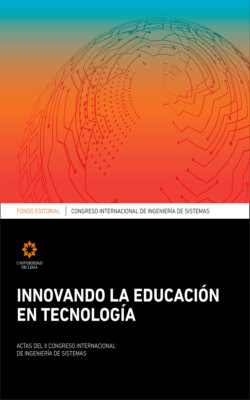Читать книгу Innovando la educación en la tecnología - Группа авторов - Страница 24
1. INTRODUCTION
ОглавлениеThe rapid changes taking place in today’s world have important consequences for education in general, and for engineering education in particular. Traditional “chalk and talk” teaching methodologies are not effective in engineering education, where it is necessary to combine the explanation of complex concepts with the practice of these concepts in realistic scenarios. In order to do this, it is necessary to apply learner-centered methodologies that promote active learning (Alario-Hoyos, Estévez-Ayres, Delgado Kloos, Villena-Román, Muñoz-Merino, et al., 2019), and that can be tailored to different education contexts, including face-to-face education in the classroom, online education, and blended (or hybrid) education (Pérez-Sanagustín, Hilliger, Alario-Hoyos, Delgado Kloos, & Rayyan, 2017).
Innovation in engineering education cannot take place without the support of a multi-disciplinary team of specialized professionals. Instructional designers must advise teachers on how to redesign their traditional course to turn it into a blended learning experience, making the most of the available resources with the aim to promote active learning (Baepler, Walker, & Driessen, 2014). Pedagogues and psychologists must contribute with the understanding and development of self-regulated learning (SRL) skills to ensure student success, especially in engineering education where further development of SRL skills is required to succeed (Zimmerman, 2013). Developers must create applications and simulators to put into practice and evaluate the key concepts of each course. Researchers and data scientists must collect and analyze data, offering visualizations so that the main stakeholders of the educational process (students, teachers, managers, etc.) can make informed decisions. All in all, innovation in engineering education is a multidisciplinary effort in which all supporting professionals and actions must be aligned with the ultimate goal to benefit students.
Among the abovementioned professionals, the role of researchers and data scientists is becoming more and more important in the last few years. Over the course of time, many efforts to innovate in engineering education have been undertaken without considering the research advances in the field of technology-enhanced learning. Today, with the amount of data that can be collected for the particular context of each educational institution, there is no longer an excuse for not implementing data-driven decision-making processes at the different levels: 1) teachers must rely on data to improve their content and the methodologies used in their classes; 2) students must rely on data to detect their knowledge gaps and improve their SRL skills; and 3) managers must rely on data to detect unbalanced programs or unsatisfactory courses, and to offer personalized pathways for students.
The aim of this paper is to present and discuss some relevant trends in data-driven innovation in engineering education on the basis of recent research results. All the trends analyzed here have the student as the ultimate target stakeholder, so these trends are framed within the area known as learning analytics (Ferguson, 2012). However, the collection and processing of data for decision-making have a twofold side and are not without risks, some of which are also discussed in this paper. This is precisely the structure followed in the rest of this paper, with section 2 discussing trends on data-driven innovation in engineering education, section 3 dedicated to discussing associated risks, and section 4 presenting the conclusions of this work.
